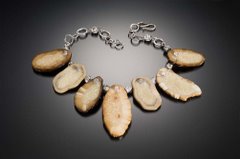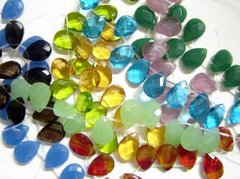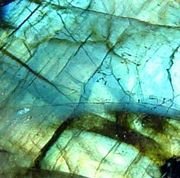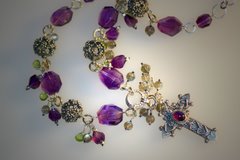I have been fascinated with the study of mankind and ancient beads. Apparently, human desire to create has been present for thousands of years. Personal ornament, along with art, has been integral to the development of human beings.
The Earliest 'Bling'
Some of the earliest ornaments were seashell beads; for example, beads from South Africa have been analyzed and dated from 75,000 years ago. More recent discoveries by scientists have found even older beads. As reported in National Geographic, these seashell beads were excavated from sites in Israel and Algeria and date from 100,000 to 135,000 years ago. Remoteness from the seashore indicates that there was a deliberate selection and transportation by humans of these shells for symbolic use and personal ornamentation. Personal ornaments have many different and multiple functions. They may used to beautify the body, function as ‘love letters’ in courtship or as amulets that express individual or group identity.
Symbols
Beyond meeting the need for food and survival, these earliest humans were living as social beings and constructing ideas and beliefs surrounding their ‘found objects’. These beads are archaeological proof that mankind has had an ability to think symbolically and creatively from its ancient beginnings. Specialists in the study of cultural diversity agree that these early beads indicate that humans had an ability to assign symbolic meaning to objects and to construct social conventions or traditions around them. Whether the beads were used in gift-giving systems in order to strengthen social and economic relationships or whether the beads were used as markers of ethnic, social and personal identity, there is no doubt that these early ‘expressions’ were intentional and creative uses of ‘found materials’.
Evolving Jewelry Styles
Besides the earliest shell beads, which survived weather and time, men and women have adorned themselves with other handmade decorations such as garlands of flowers, bracelets of woven grass, and stone beads. These were the first decorations to beautify the human body. Over the centuries, jewelry styles and materials have evolved in step with the advances of civilization. From the Stone Age to the Bronze Age, from the Iron Age to the Industrial Revolution, designs and materials have transformed, modernized, and then often returned to their most basic forms and essential elements.
Jewelry Today
Today, the majority of jewelry products are machine made, allowing manufacturers to produce uniform jewelry designs much more economically than traditional handcrafting and hand-casting techniques allow. Even complex jewelry designs can be produced with speed and uniformity. The manufacturing helps ensure the production of a consistent and highly profitable product.
However, in the past few decades, the modern marketplace has experienced a new interest in handmade jewelry and a greater value is being placed on limited edition and one of a kind art jewelry designs. These pieces of art jewelry are designed by artists, are made by hand and often utilized ancient crafting processes. With this renewed interest in the art and craft of jewelry, many jewelry artists around the world and enjoying recognition for the talent and skills. There are many specialty galleries that feature an array of handmade jewelry. The Internet facilitates the advent and spread of art jewelry sales globally. Recognizing the eye of the artist and the power and energy of handmade objects, brings us back to our roots—our desire for individuality, beauty, and love.
Circle of Life
In my opinion, a significant hope for the peaceful outcome of our future, lies in this most basic of truths—that men and women are thinking beings and that they desire to create beauty both for themselves and for others. There is abundant evidence that human beings have been ‘human’ for thousands of years. Recognizing our continuity with our ancient ancestors may be our best hope for rediscovering true sources of compassion, serenity and hope.
The human soul is hungry for beauty; we seek it everywhere—in landscape, music art, clothes, furniture, gardening, companionship, love, religion and in ourselves. No one would desire not to be beautiful. When we experience the Beautiful, there is a sense of homecoming.
John O’Donohue
The Invisible Embrace: Beauty
Saturday, May 19, 2007
Beads as Ornamentation ~ The Earliest ‘Bling’
Subscribe to:
Post Comments (Atom)





No comments:
Post a Comment